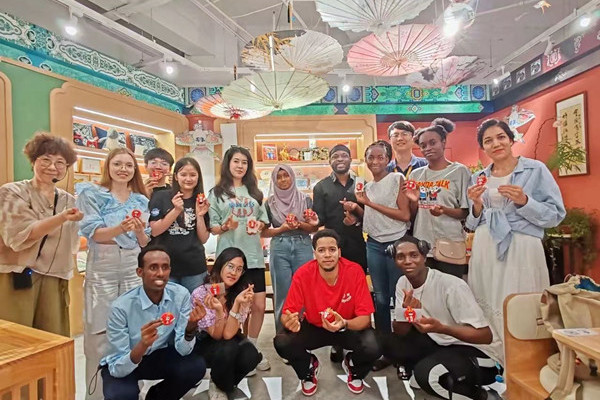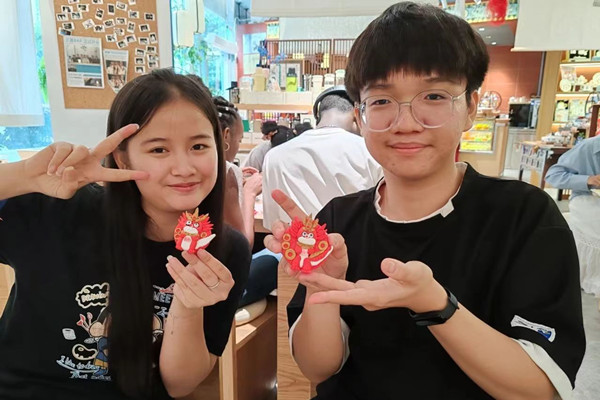Tongji intl students explore Chinese dough figurine art
On July 3, 15 international students from Tongji University participated in a hands-on workshop on traditional Jiangwan dough figurine art, guided by Qi Yiping, an inheritor of this Shanghai intangible cultural heritage.

Students take a picture with their hand-made dough figurines. [Photo/The International School of Tongji University]
Dough figurine art, a unique form of Chinese folk art, originated during the Han Dynasty (206 BC-AD 220) and boasts a history of over 2,000 years. These figurines are primarily made from flour and glutinous rice flour, with added colors, paraffin, honey, and other materials. After treatment to prevent cracking and mold, the dough is manually shaped through processes such as kneading, rolling, pressing, and lifting.
In the Jiangwan area of Shanghai's Yangpu district, there is a tradition of making dough flowers during festivals. During the workshop, Qi introduced the technique of making Jiangwan dough figurines and explained the various forms and meanings of dragons. In Chinese culture, the dragon symbolizes good fortune and blessings, while also representing power, nobility, and good luck.

Students learn how to make dragon-shaped dough figurines. [Photo/The International School of Tongji University]
Under Qi's guidance, the students created dragon-shaped dough refrigerator magnets. Through this experience, they not only learned how to make dough figurines but also gained a deeper understanding of the significance of dragons in Chinese culture.

Students display their dragon-shaped refrigerator magnets. [Photo/The International School of Tongji University]
Source: The International School of Tongji University



 Subscribe
Subscribe












